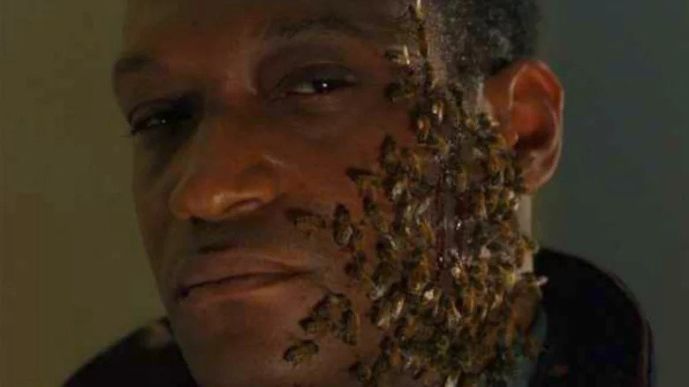The real Candyman stories behind the legend may not be supernatural, but they are just as chilling as anything the movie could ever depict.
Slasher icon Candyman (played by Tony Todd) has become a horror legend in his own right, but the character was inspired by two real urban legends.
What happened to Ruthie Mae McCoy?
On April 22, 1987, 52-year-old Ruth Mae McCoy [Ruthie Mae Mccoy] was murdered by someone who entered her 11th floor Abbott apartment (1440 W. 13th St.) through her bathroom cabinet somewhere between 8:50 PM and 9:05 PM. Chicago Police and CHA security guards arrived back at McCoy’s apartment.

Candyman is a 1992 American supernatural horror film, written and directed by Bernard Rose and starring Virginia Madsen, Tony Todd, Xander Berkeley, Kasi Lemmons and Vanessa E. Williams.
Based on Clive Barker’s short story “The Forbidden”, the film follows a Chicago graduate student completing a thesis on urban legends and folklore, which leads her to the legend of the “Candyman”, the ghost of an artist and son of a slave who was murdered in the late 19th century for his relationship with the daughter of a wealthy white man.
Is ‘Candyman’ Based On A True Story?
Is the character of Candyman based on a real-life person? Is the Candyman movie based on a true story?
In a word, no. But also…yes. Candyman may not be exactly based on a singular historical figure or true story, but it doesn’t mean the elements that influenced it aren’t rooted in them.
The original movie is actually based on the 1985 short story “The Forbidden” by horror master Clive Barker, which itself was based on a 1978 short film Barker had directed.
Barker’s story provided the framework for Candyman: Both movies follow a graduate student named Helen whose thesis research alerts her to the local urban legend of the Candyman.
Eventually, her investigations and skepticism draw the attention of the real Candyman and his wrath. In both the book and the movie, Helen ends up murdered by a vengeful Candyman, herself then becoming part of the local folklore surrounding the Candyman.
Adapted and directed by Bernard Rose from a short story by horror maestro Clive Barker (“Hellraiser”), “Candyman” follows a grad student (Virginia Madsen) who sets out to debunk a sinister urban legend only to find said legend realer than she ever could’ve imagined.
The film’s fictional facts aside, there’s more legitimate historical bite to “Candyman” than we might’ve known. And it turns out the Candyman wasn’t the only thing one needed to fear emerging from their bathroom window, as there’s a legit factual basis for the film’s creepy “behind the medicine cabinet” twist.
In the context of the Candyman films, the character is an urban legend who draws his power from those who believe in him, and anyone who challenges that belief by daring to speak his name five times into a mirror instantly becomes a target.
A man named Daniel Robitaille in life, Candyman is a tragic, even romantic figure, but that won’t stop him from slicing anyone who crosses him or gets in his way from groin to gullet with his trademark hook.
The Candyman’s Roots in Real History
As most anyone can tell you, Daniel’s fate and setting aren’t entirely the stuff of fiction. After the Civil War, white people did react to interracial relationships with violence, killing Black men to “protect” white women.
Anti-miscegenation laws forbade interracial marriage and sex back to the time of the colonies, and they weren’t abolished until the landmark Loving v. Virginia case.
Additionally, Cabrini-Green, where the movie takes place, had a violent reputation; there were 11 people murdered and 37 shot in the first three months of 1981.
So, there you have it, an abridged history of the Candyman lore. Even though there’s probably no real Candyman, you still won’t find us saying his name five times into a mirror.
Image Source – Tristar

